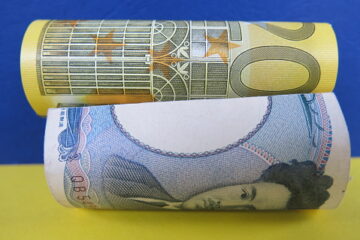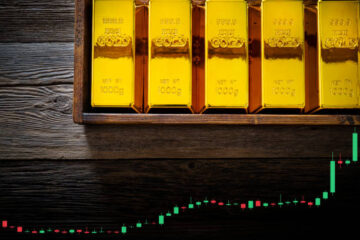The stock market found its footing on Monday April 7 after the S&P 500 fell 10% following President Trump’s tariff announcement last week, but bullishness flipped to bearishness again on Tuesday afternoon.
Related: BlackRock CEO Larry Fink shares bad recession news
The S&P 500 gained 4% early on Tuesday after encouraging comments from Treasury Secretary Scott Bessent suggesting President Trump is open to negotiating lower tariffs.
Unfortunately, market optimism in the afternoon when it became clear that stiffer tariffs on China would be imposed at midnight after the ‘Red Dragon’ showed an unwillingness to come to the negotiating table. As a result, the S&P 500 closed down 1.5%,
Stocks reversed early gains on Tuesday after new China tariffs went into effect.
Tariffs rock stocks
The S&P 500 and Nasdaq Composite have reacted poorly to the emerging trade tensions.
Investors went into President Trump’s “Liberation Day” announcement hoping that tariffs would be measured, and manageable. However, controversy over the method of calculating reciprocal tariffs quickly emerged when the tariffs unveiled came in substantially higher than predictions.
Related: Mark Cuban makes shocking trade war prediction
The White House had indicated that tariffs would be set to offset tariffs and other trade restrictions in place overseas.
Instead, the tariff calculation was based on each country’s trade imbalance with the United States, divided by American imports from that nation. The result were tariffs significantly higher than actual tariffs charged on U.S. imports by countries worldwide, including in Europe and Asia.
The proposed import taxes rocked stocks because they will cause companies to increase prices to consumers or reduce profit margins. Given sales could slow if inflation accelerates and profit could slip if companies absorb the new costs, investors reset their models to reflect a growing risk of recession and lower earnings.
Stocks mount fleeting rally
The stock market’s sharp selloff on Thursday and Friday triggered oversold indicators, setting up a potential rally.
On Tuesday, Secretary Bessent said roughly 70 countries had contacted the administration to negotiate tariffs, and the first negotiations would begin soon with Japan, which faces tariffs of 24%.
Optimism that a hardline on tariffs may ease fueled an early-day rally, but momentum reversed when the White House confirmed it would substantially increase its proposed tariffs on China after Chinese leaders unveiled their own retaliatory tariffs over the weekend, vowing to “fight to the end.”
Related: Rare event could send S&P 500 surging soon
China’s retaliation drew a sharp rebuke from President Trump, who responded by threatening an additional 50% tariff if China didn’t back down. The administration confirmed that China had not rolled back its tariffs, making the new increased tariff effective on Wednesday.
The tariff imposed on China is incredibly high, given it comes on top of previous tariffs announced this year totaling 54%. Altogether, Chinese imports face a 104% levy, a significant barrier that’s likely to impact everything from clothing to car parts.
Renewed inflation worries caused already antsy investors to hit the sell button again, sending shares reeling. After being up
The S&P 500 closed down 1.5% and the tech-heavy Nasdaq Composite lost 2.2%.
Related: Veteran fund manager unveils eye-popping S&P 500 forecast


